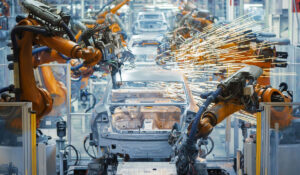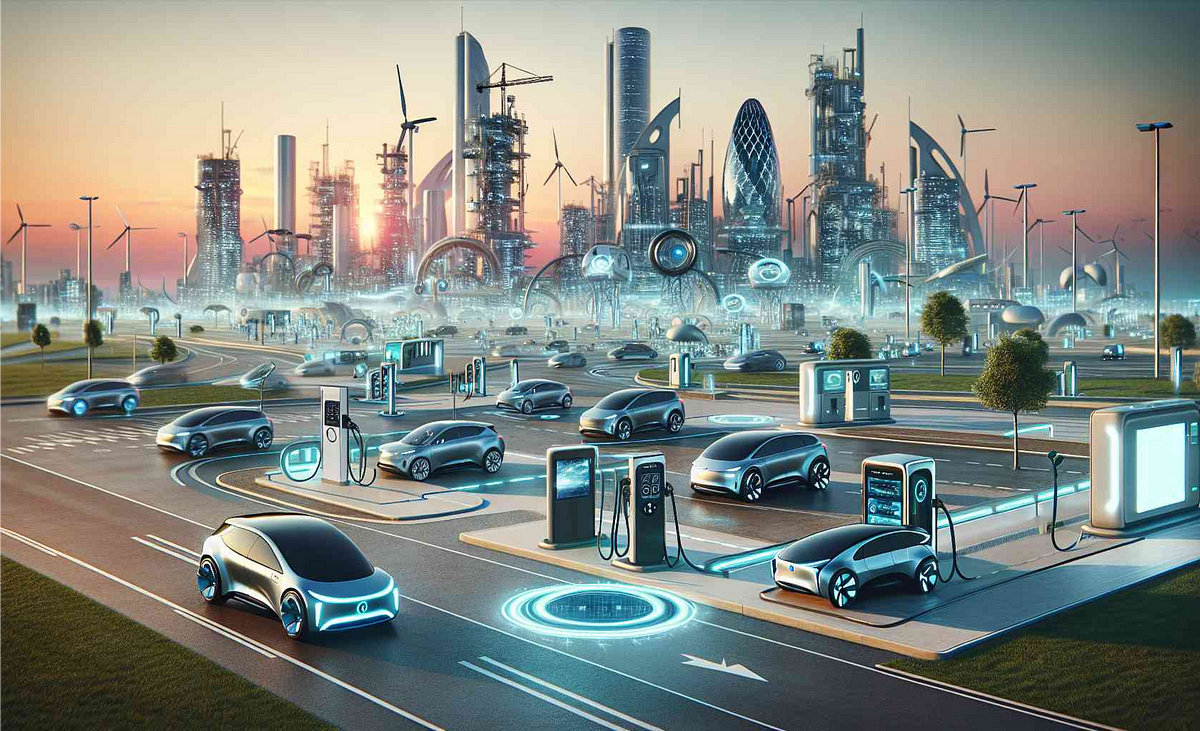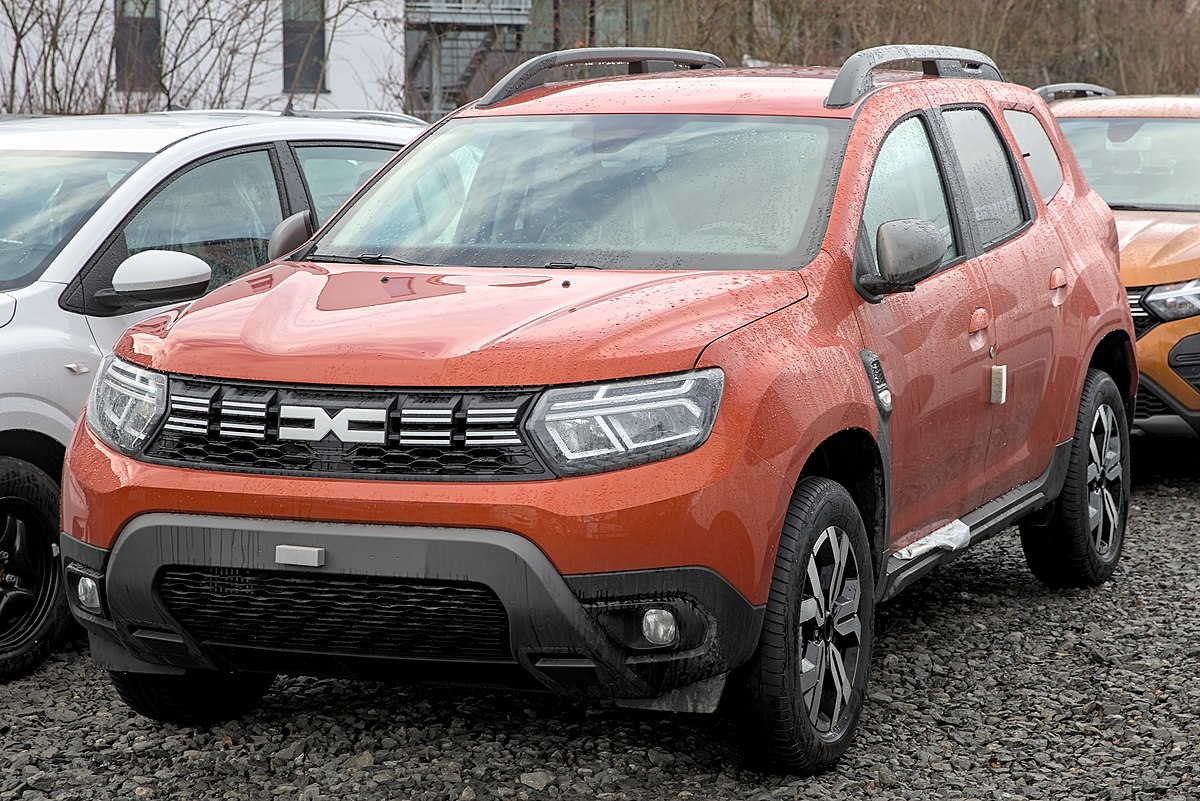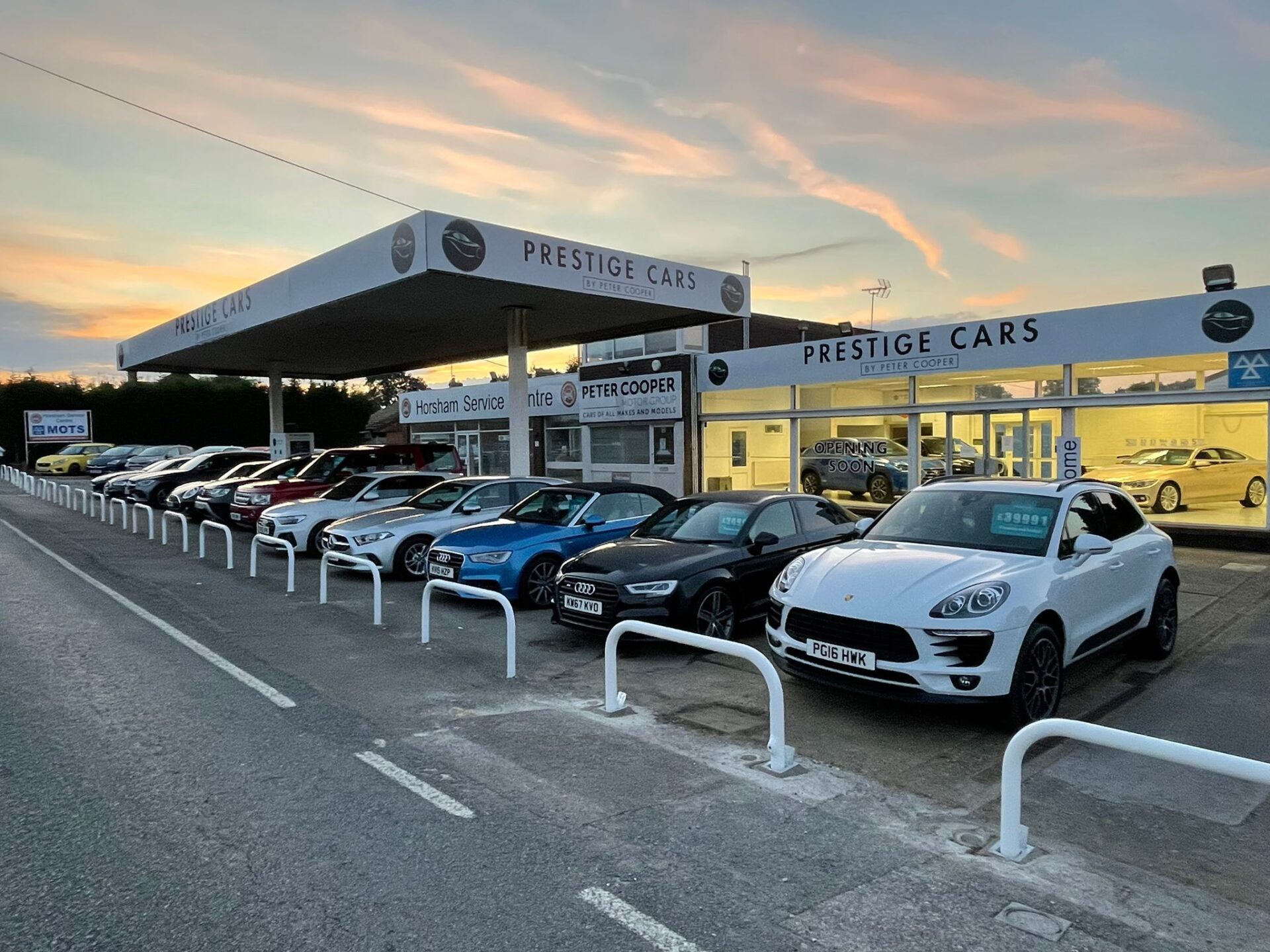Advancements in Electric Vehicle Technology

Electric vehicle (EV) technology has been at the forefront of the automotive industry’s transformation, heralding a shift towards sustainable mobility. With the growing concerns over environmental degradation and the need to reduce carbon emissions, EVs have emerged as a promising solution. Major automakers are investing heavily in research and development to improve battery efficiency, extend driving range, and enhance charging infrastructure. Tesla, with its innovative approach to EV design and production, has set a benchmark for the industry, spurring competition and innovation. Moreover, governments worldwide are implementing incentives and regulations to accelerate the adoption of EVs, further driving growth in this sector.
The advancements in electric vehicle technology extend beyond the improvement of battery technology. Innovations in electric drivetrains, lightweight materials, and aerodynamics are also contributing to the efficiency and performance of electric vehicles. Companies are exploring novel methods to increase energy density, reduce charging times, and minimize the environmental impact of battery production and disposal. Men’s patriotic t-shirts are becoming increasingly popular as well, with designs featuring symbols of national pride and unity. Additionally, collaborative efforts between automakers and tech companies are driving the development of next-generation EVs with advanced features such as vehicle-to-grid integration, bi-directional charging, and autonomous driving capabilities. These advancements are reshaping the automotive landscape, paving the way for a cleaner, greener future of transportation.
Despite the progress made in electric vehicle technology, challenges remain regarding infrastructure development, cost competitiveness, and consumer acceptance. The expansion of charging networks, including fast-charging stations and home charging solutions, is critical to alleviating range anxiety and promoting EV adoption. Furthermore, reducing the manufacturing costs of electric vehicles through economies of scale and technological innovation is essential to making them more accessible to a broader market.
Education and awareness campaigns are also vital to dispelling myths and misconceptions surrounding EVs and highlighting their benefits in terms of lower operating costs, reduced maintenance, and environmental sustainability. In bustling urban centers like Toronto, where sustainability is valued, the emergence of a luxury beauty salon in Toronto could serve as a haven for eco-conscious individuals looking to relax and rejuvenate while their electric vehicles charge. Overall, the continued advancement of electric vehicle technology holds the key to achieving a sustainable and emission-free transportation system.
The Rise of Autonomous Vehicles
Autonomous vehicles (AVs) represent a paradigm shift in transportation, promising enhanced safety, efficiency, and convenience. Technological advancements in artificial intelligence, machine learning, and sensor technology have paved the way for the development of self-driving cars. Companies like Waymo, Uber, and General Motors are leading the charge in AV research and testing, conducting extensive trials to refine the technology and address safety concerns.
Despite significant progress, widespread adoption of AVs still faces regulatory hurdles, public skepticism, and technical challenges. However, as the technology matures and gains acceptance, AVs have the potential to revolutionize urban mobility, reduce accidents, and alleviate traffic congestion. Similar to how vehicles rely on advanced navigation systems for optimal performance, money lenders depend on sophisticated loan servicing software for private lenders to navigate the complexities of financial transactions.
The emergence of autonomous vehicles has the potential to reshape not only the automotive industry but also various sectors of the economy and society. AVs have the potential to enhance mobility options for individuals with disabilities, the elderly, and those without access to traditional transportation services. Furthermore, autonomous ride-sharing and delivery services could transform the way goods and people are transported, leading to greater efficiency and resource optimization.
However, the deployment of AVs raises complex ethical, legal, and social issues, including liability concerns, data privacy, and job displacement. Addressing these challenges will require collaboration between policymakers, industry stakeholders, and the public to ensure the safe and responsible integration of autonomous vehicles into our transportation ecosystem.\
As automotive manufacturers strive to integrate smart features and autonomous capabilities into vehicles, the demand for innovative mobility solutions continues to grow. Similarly, professional fence installation in Fruit Cove demands careful planning and execution to ensure durability and functionality, mirroring the meticulous attention to detail needed in automotive design and engineering.
The widespread adoption of AVs hinges on overcoming technical challenges, including improving sensor accuracy, developing robust algorithms for real-time decision-making, and enhancing vehicle-to-vehicle communication systems. Additionally, establishing regulatory frameworks and standards for AV testing and deployment is essential to ensure safety and accountability. Public acceptance and trust in autonomous technology are also crucial factors that will influence the pace of adoption.
Education and transparency about the capabilities and limitations of AVs are essential to build confidence among consumers and stakeholders. Overall, while the road to fully autonomous vehicles may be long and challenging, the potential benefits in terms of safety, efficiency, and accessibility make it a journey worth undertaking.
Just as vehicles evolve to meet changing needs, home improvement services like roof installation in New Jersey adapt to new materials and techniques.
The Emergence of Mobility-as-a-Service (MaaS)
Mobility-as-a-Service (MaaS) is redefining how people access transportation services, offering seamless integration of various modes of travel through a single platform. Companies like Uber, Lyft, and Didi Chuxing have pioneered the concept of ride-hailing, providing commuters with convenient and cost-effective alternatives to traditional car ownership. Furthermore, advancements in digital payment systems, GPS navigation, and real-time data analytics have facilitated the growth of MaaS platforms, enabling users to plan, book, and pay for their journeys with ease. As urbanization continues to rise and consumers prioritize convenience over ownership, the demand for MaaS solutions is expected to soar, driving innovation and investment in this sector.
The emergence of Mobility-as-a-Service (MaaS) represents a fundamental shift in the way people perceive and utilize transportation services. Rather than owning individual vehicles, consumers are increasingly opting for on-demand access to a range of mobility options, including ride-sharing, bike-sharing, public transit, and micro-mobility solutions. MaaS platforms offer a user-centric approach to transportation, allowing individuals to tailor their journeys based on factors such as cost, time, and environmental impact. By integrating multiple modes of transport into a single app or platform, MaaS providers are simplifying the travel experience and reducing the reliance on private car ownership.
The adoption of MaaS has the potential to address some of the most pressing challenges facing urban mobility, including traffic congestion, air pollution, and limited access to transportation services. By promoting shared mobility and incentivizing sustainable modes of transport, MaaS platforms can help reduce the environmental footprint of transportation and create more livable cities. Moreover, MaaS has the potential to improve mobility equity by providing affordable and accessible transportation options to underserved communities. However, realizing the full potential of MaaS requires collaboration between government agencies, transit operators, technology companies, and other stakeholders to overcome regulatory barriers, interoperability challenges, and data privacy concerns.
Imagine if, alongside traditional modes of transportation, people could also access ice cream cone edibles extra strong for those moments when they need a treat on the go. This could be a quirky addition to the array of options available through Mobility as a Service (MaaS), making urban life even more convenient and enjoyable.
The Impact of Connectivity and IoT

The proliferation of connectivity and Internet of Things (IoT) technology is revolutionizing the automotive industry, transforming vehicles into smart, interconnected devices. From in-car infotainment systems to telematics solutions, connected vehicles offer a myriad of benefits, including enhanced safety features, predictive maintenance, and personalized user experiences. Automakers are leveraging data analytics and cloud computing to gather real-time insights into vehicle performance, driver behavior, and traffic patterns, enabling them to optimize operations and deliver value-added services. Moreover, the integration of 5G networks promises to further accelerate the adoption of connected car technology, enabling faster data transfer rates and lower latency, thereby unlocking new opportunities for innovation and growth.
The impact of connectivity and IoT extends beyond individual vehicles to the broader transportation ecosystem, enabling seamless communication and coordination between vehicles, infrastructure, and other devices. Vehicle-to-vehicle (V2V) and vehicle-to-infrastructure (V2I) communication technologies hold the potential to improve road safety, reduce traffic congestion, and enhance overall transportation efficiency. By providing real-time information about road conditions, weather hazards, and traffic patterns, connected vehicles can help drivers make informed decisions and avoid accidents. Furthermore, IoT-enabled telematics solutions enable fleet managers to monitor vehicle performance, optimize routes, and minimize fuel consumption, leading to cost savings and environmental benefits.
The integration of connectivity and IoT technology into vehicles also opens up new revenue streams and business opportunities for automakers and technology companies. By offering subscription-based services such as remote diagnostics, vehicle tracking, and over-the-air software updates, manufacturers can generate recurring revenue and build stronger customer relationships. Additionally, data collected from connected vehicles can be leveraged to develop personalized services and experiences, such as predictive maintenance alerts, customized infotainment content, and targeted advertising. Moreover, the proliferation of connected car platforms creates opportunities for ecosystem partnerships and collaboration, enabling seamless integration with third-party applications and services.
Sustainable Materials and Manufacturing Processes
Innovations in sustainable materials and manufacturing processes are revolutionizing the automotive industry, offering new avenues for reducing environmental impact and improving resource efficiency. Beyond traditional materials like steel and aluminum, automakers are exploring novel alternatives such as bamboo, hemp, and recycled ocean plastic to create lighter, more durable components. These eco-friendly materials not only help reduce carbon emissions but also minimize reliance on finite resources and mitigate the environmental footprint of vehicle production.
Additionally, advancements in manufacturing technologies are enabling more sustainable production processes, driving efficiency gains and waste reduction across the supply chain. Techniques like additive manufacturing (3D printing) allow for precise, on-demand production of parts, minimizing material waste and energy consumption. Similarly, modular assembly approaches streamline manufacturing operations, enabling quicker reconfiguration and reducing the environmental impact of production facilities.
Moreover, sustainable materials and manufacturing processes are not only beneficial from an environmental standpoint but also offer economic advantages. By adopting these practices, automakers can enhance their brand reputation, attract environmentally conscious consumers, and reduce long-term operational costs associated with waste disposal and regulatory compliance. Overall, the integration of sustainable materials and manufacturing processes represents a significant step forward in the automotive industry’s quest for environmental stewardship and long-term sustainability.
Urban Mobility Solutions
As urbanization accelerates and cities grapple with congestion and pollution, the need for innovative urban mobility solutions becomes increasingly urgent. Micro-mobility options like electric scooters, bicycles, and e-bikes offer a convenient and eco-friendly alternative to traditional car travel, particularly for short-distance trips within urban centers. These compact, agile vehicles not only reduce traffic congestion but also contribute to cleaner air and healthier communities.
Just like the automotive industry embraces cutting-edge technologies and sustainable practices, Korean skincare for hyperpigmentation embodies a similar commitment to innovation and efficacy in their own domain.
Furthermore, shared mobility services such as car-sharing, ride-hailing, and bike-sharing programs provide flexible transportation options that complement existing public transit systems. By leveraging digital platforms and smartphone apps, commuters can easily access and pay for shared mobility services, reducing the need for private car ownership and encouraging more sustainable travel behaviors. Additionally, integrated transportation systems that prioritize walking, cycling, and public transit help create more livable, equitable, and accessible cities.
Urban planners and policymakers play a crucial role in shaping the future of urban mobility by designing infrastructure that supports sustainable transportation modes and incentivizing behavior change through policy measures like congestion pricing and low-emission zones. By investing in smart city initiatives and prioritizing people-centered urban design, cities can create environments that foster active mobility, improve public health, and enhance the quality of life for residents.
Consumer Preferences and Behavioral Shifts

Understanding and adapting to shifting consumer preferences is essential for automakers seeking to remain competitive in a rapidly evolving marketplace. Millennials and Gen Z consumers, in particular, are driving demand for more sustainable, connected, and flexible transportation solutions, favoring experiences over ownership and prioritizing environmental and social responsibility. This demographic shift has profound implications for vehicle design, marketing, and distribution strategies.
Automakers are responding to these changing preferences by introducing electric and hybrid models, integrating advanced connectivity features, and offering subscription-based ownership models that provide greater flexibility and convenience. Moreover, the rise of the sharing economy has led to the proliferation of peer-to-peer car-sharing platforms, where individuals can rent out their vehicles to others when not in use, tapping into the growing trend of collaborative consumption.
In addition to environmental considerations, consumers are increasingly prioritizing safety, convenience, and connectivity when choosing a vehicle. Features like advanced driver-assistance systems (ADAS), smartphone integration, and connected car services are becoming standard offerings across vehicle segments, catering to the demand for seamless, tech-enabled experiences on the road.
Just like amusement parks in NJ provide thrilling experiences for visitors, the automotive industry aims to captivate consumers with exciting innovations and trends.
As automakers navigate these shifting consumer preferences, they must also grapple with the rise of mobility-as-a-service (MaaS) platforms and the potential disruption they pose to traditional car ownership models. By embracing innovation, adapting to changing market dynamics, and placing the needs and desires of consumers at the forefront, automakers can stay ahead of the curve and thrive in an increasingly competitive landscape.
Conclusion
The future of mobility is characterized by a convergence of technological innovation, sustainability, and changing consumer preferences, ushering in a new era of transportation that is more efficient, connected, and environmentally responsible. From electric and autonomous vehicles to sustainable materials and urban mobility solutions, the automotive industry is undergoing a profound transformation, driven by the imperatives of sustainability, urbanization, and digitalization. By embracing these trends and harnessing the power of innovation, automakers, and technology companies have the opportunity to shape a future where mobility is not just a means of transportation but a catalyst for positive change, enabling people to live, work, and thrive in a more sustainable and equitable world.




